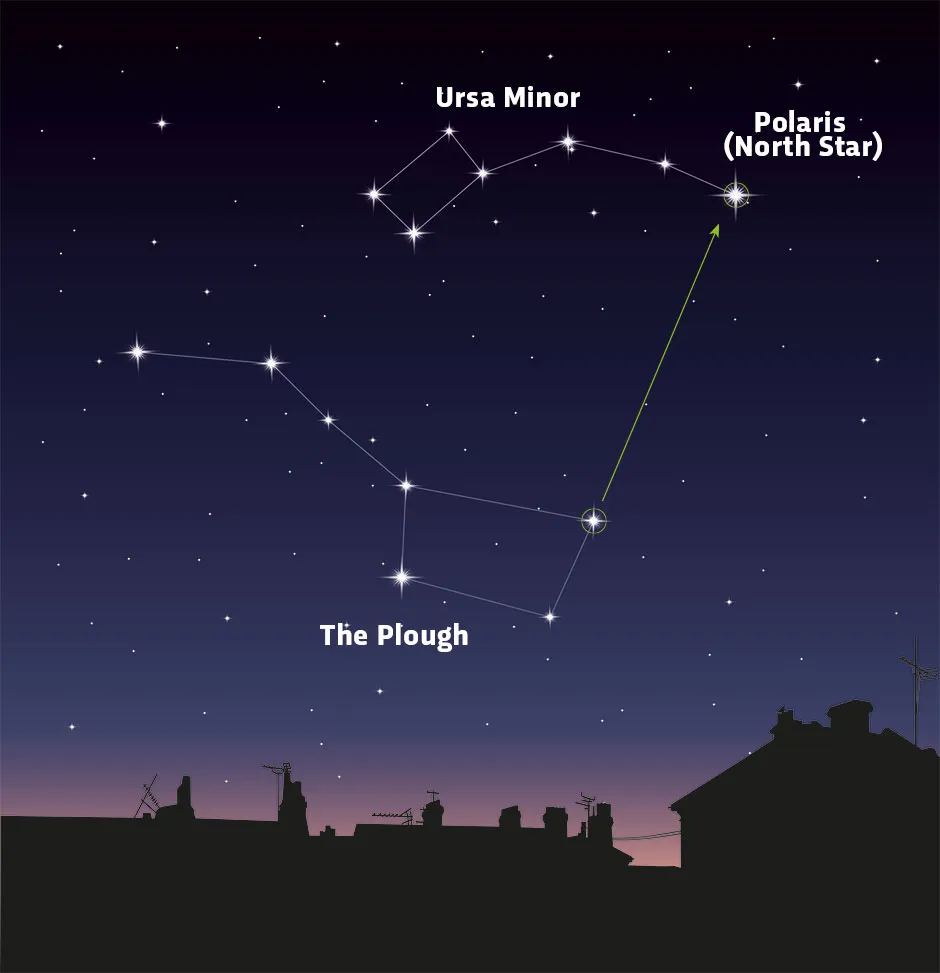As the seasons change, so do the stars visible in the sky. But from the northern hemisphere, one star is constant. The North Star, or Polaris to give it its official name, is so-called because it is positioned almost exactly above our North Pole, in line with the Earth’s rotational axis.
As the Earth rotates, Polaris stays almost fixed, while the other stars appear to rotate around it. Polaris is actually three stars, but they’re locked in a mutual orbit and appear to us as one star in the constellation Ursa Minor (Little Bear). The largest of these is a yellow supergiant with over five times the mass and more than 1,000 times the brightness of our Sun. It’s roughly 400 light-years away, but is still around the 50th brightest star in the night sky.

Wherever you are in the northern hemisphere, you’ll be able to see Polaris. The constellation Ursa Major (Great Bear) offers the easiest way to find it. This is home to the famous, pan-shaped pattern of stars (‘asterism’) known as ‘the Plough’ in the UK and the ‘Big Dipper’ in the US. Locate this asterism by looking for the four bright stars that mark the pan’s ‘bowl’, and the three stars that mark the ‘handle’.
Now imagine a straight line passing up through the two stars on the pan that are furthest from the handle. If you continue this line until you find a distinctively bright star, you've found the North Star!
Earth’s axis is tilted, and it moves around like a gyroscope in a slow process called precession. This means that in a couple of thousand years’ time, Polaris will no longer be the North Star. That honour will instead go to Gamma Cephei, a binary star system in the constellation Cepheus.
Read more:
- A beginner’s guide to stargazing, no telescope required
- How do I find the Summer Triangle this month?
- 9 stargazing tips to get you watching the stars from home
- How do I watch tonight’s Lyrid meteor display?
